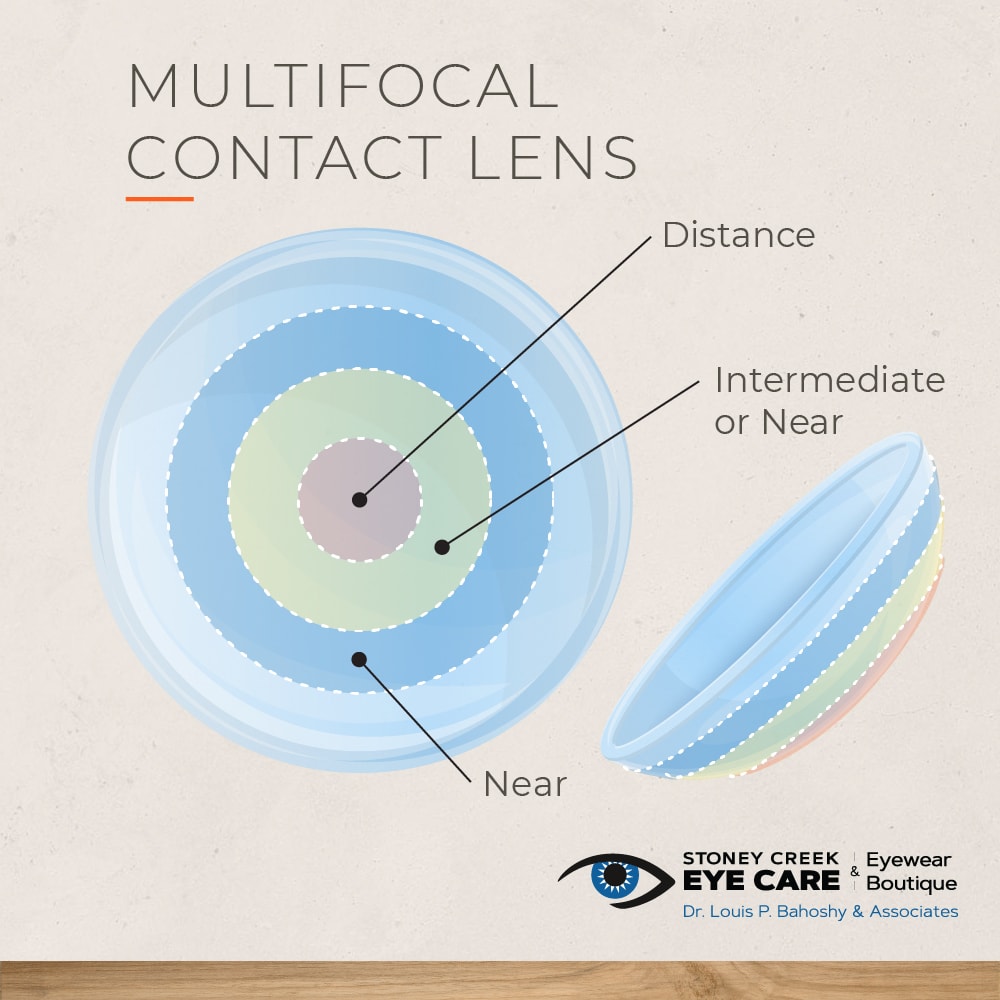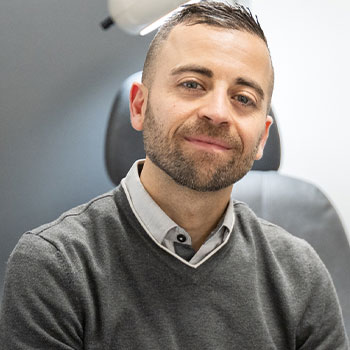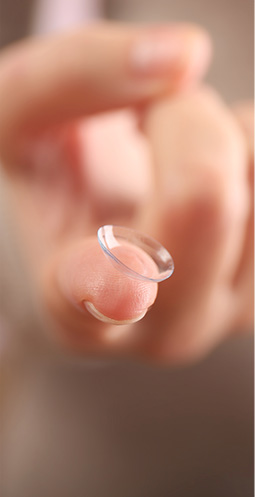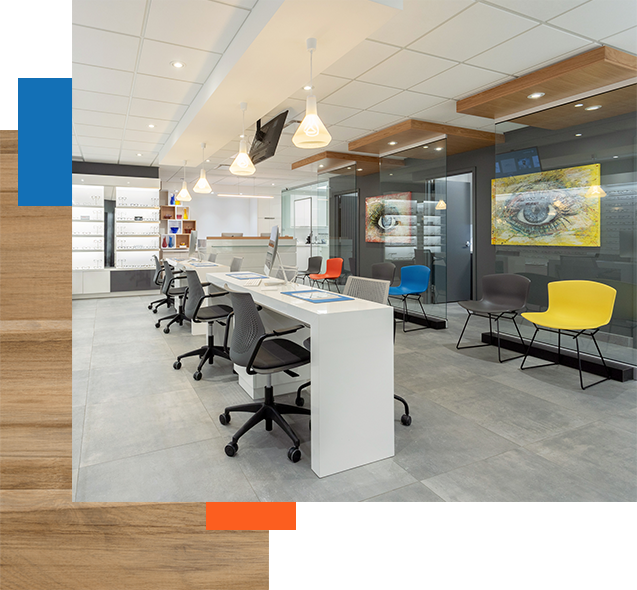Why Would You Need a Lens with Multiple Prescriptions?
Multifocal lenses allow wearers to see clearly at multiple distances without having to switch between prescriptions or struggle to make out details. You may need a lens with multiple prescriptions if you regularly work on a computer, drive often, or enjoy reading, for some basic examples.
As we age, our eyes focusing power weakens, causing us to have trouble seeing at a distance and refocusing on something up close. In our early to mid-40s, this issue is magnified, leading to symptoms of presbyopia.
Additionally, multifocal lenses may help young adults with eye teaming or focusing problems to reduce eye strain when focusing on objects up close. Multifocal lenses may also help control myopia in children by lessening how intently their eyes focus on reading or near work.
Presbyopia
Presbyopia occurs as a result of natural changes to the eyes over time. Due to ageing, the lens of your eye begins to lose elasticity and flexibility, making it difficult to focus on close objects.
Presbyopia usually begins to show symptoms in your mid 40’s. You may notice you have trouble seeing fine print or in low light, and may get headaches when having to focus on near objects for an extended amount of time.
Although presbyopia is a natural part of ageing and is not preventable, multifocal lenses can significantly increase visual acuity and improve your quality of life if you have presbyopia.
Bifocals
Bifocals contain 2 lens powers to allow wearers to see objects up close and far away clearly. The lens segments with a power dedicated to assisting in near-vision correction come in a variety of shapes to cater to your eyes’ unique needs.

How Bifocals Work
The near-vision lens segment is located in the lower part of the lens, as it is natural to gaze downward when focusing on objects close by. The upper part of the lens is for distance vision as looking straight ahead and gazing upwards is usually for focusing on things that are far away.
The near-vision lens segment can be in the shape of a half-moon, a small circle or rectangle, or the full bottom half of the lens, inspired by Benjamin Franklin, who invented the bifocal.
Trifocals
Like bifocals, trifocals are lenses with multiple powers that allow wearers to have clear vision at multiple distances. Trifocals have 3 lens powers within them, so, unlike bifocals, provide clear vision at intermediate distances.
Intermediate distances are around an arm’s length, like working on a computer, or the gauges on a dashboard. The lenses are split into 3 sections, the bottom correcting near-vision, the middle for intermediate distances, and the top for far-away objects.

How Trifocals Work
When wearing trifocals, if you gaze slightly lower, you can see objects at an intermediate distance clearer. If you gaze slightly lower than that, then objects that are near (within arm’s length) come into focus. Looking straight ahead will give you sharp vision at distant objects and all the way to just beyond arm’s length.
Progressive Lenses
Progressive lenses are similar to bifocal and trifocal lenses in that they have more than one power in the lens itself. They have a variable change in the power depending on where you are looking in the lens. Progressive lenses do not have any physical lines on them. Instead, they look like single vision lenses, creating a seamless transition from near-vision correction to distance.

How Progressives Work
Progressive lenses allow for a smooth transition in your vision when you change your gaze from something up close to something far away. Similar to trifocals, the bottom of the lens is for near-vision correction, the middle is for intermediate correction, and the straight-ahead portion is for distance vision.
Without having hard-defining lines between lens powers, progressives allow your eyes to adjust gradually with your gaze, which can be more comfortable for some wearers.
Which Option is Right for You?
If you require vision correction for both near and distance vision, multifocal lenses may be a good option for you. Your optometrist will be able to discern what type of multifocal will be best for you based on your eyesight and visual needs through a comprehensive eye exam.
Multifocal Contact Lenses
Multifocal contact lenses do exist, but may not work for everyone. They are similar to glasses depending on what type you get.

Multifocal progressive contact lenses have one power in the centre that gradually changes to a different power on the edges. There are different types of multifocal contact lenses as they can vary in their design and how the different powers are distributed throughout the contact lens. Your optometrist will perform a contact lens exam and fitting to best understand your visual needs and what will work best for you.
Appearance & Personal Preference
Your lifestyle and health requirements will allow you to decide on whether multifocal contact lenses or glasses will be the best option for you. Eyeglasses can come in many trendy and fashionable frames to add to your look, should you be interested in glasses.
Alternatively, contact lenses can give you more freedom and flexibility, both in appearance and functionality. It is always best to talk to your optometrist about your options before making a decision.Think multifocal lenses are right for you? Book an appointment with a Stoney Creek Eye Care professional today!








